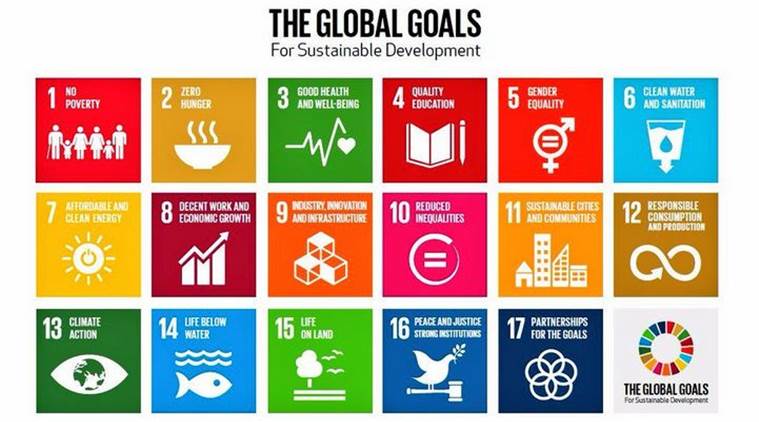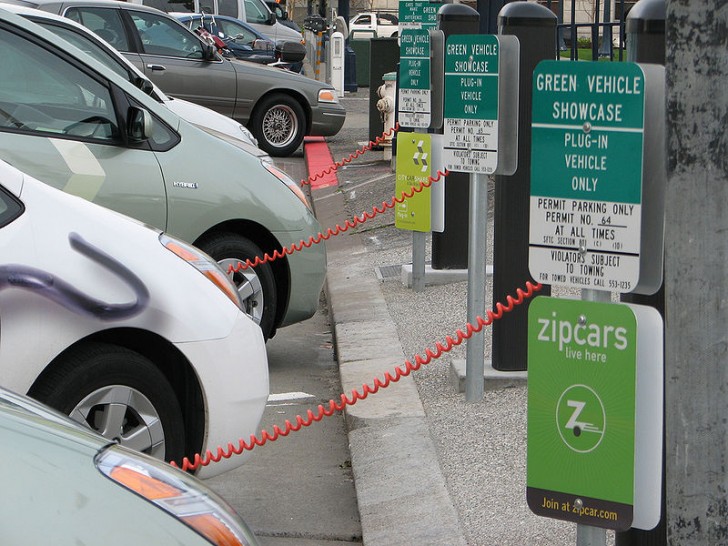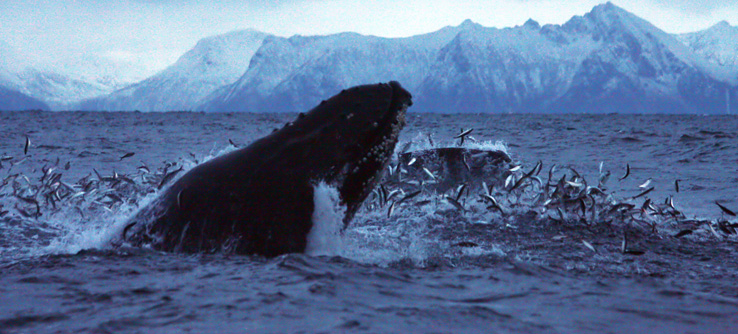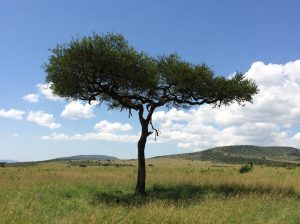
Recent Updates from the Good Food Fund
The Good Food Fund (GFF), our partner organization in China, has been actively engaged in the lead-up to the 2021 United Nations Food Systems Summit. Jian Yi, Director of GFF, is chairing the Food Environments section (Workstream 1) within Action Track 2, “Shift to Sustainable Consumption Patterns”. Brighter Green Executive Director Mia MacDonald is deputy lead to Jian Yi for Work Stream 1, Food Environments.
Part of this work has included the launch of the China Action Hub, which mobilizes stakeholders across the country to shift to healthy and sustainable diets. The China Action Hub has begun hosting a series of China Talks, which focus on key action areas to transform the food system. The first China Talk was held on February 2nd and spotlighted three best practices in school food settings. The China Action Hub has also focused on youth engagement in the lead up to the UN Food Systems Summit.
In December, Jian Yi was interviewed by Ana Bradley, Executive Director of Sentient Media. In the interview, he speaks about the impact of Covid in China, the history of plant-based diets and vegetarianism in China as well as the expansion of meat-centric diets, and the need for a global solution among all stakeholders to address the problems in our food system. You can watch Jian Yi’s interview here.
A New Relationship with Animals, Nature, and Ourselves: Brighter Green Statement on World Environment Day, June 5, 2020
On this World Environment Day, three interrelated crises are roiling societies across the planet. The first, of course, is the novel coronavirus pandemic (COVID-19), which has so far infected more than six million people and killed at least 375,000, and has revealed the weaknesses of health-care services in many countries. The second is the economic shutdown and resultant job loss because of the pandemic; and the third is the recognition that these twin crises have affected certain workers and communities disproportionately: whether they are caregivers, slaughterhouse workers, doctors and nurses, or others who maintain the everyday functioning of our societies.
Each of these crises has their own contexts; but these, too, are interrelated—and at the heart of them all are profoundly inequitable relationships. The many predominantly young protestors currently demonstrating in the U.S. and throughout the world, galvanized by the murder of George Floyd, an African-American man, by a white police officer, are well aware of how bleak a future awaits them—especially if the current system (inequitable, broken, and reliant on exclusion and enforced power) is maintained.
While the exact origins of COVID-19 remain uncertain, it is clear that it’s the latest, and almost certainly not the last, zoonotic outbreak, which make up to 70 percent of all emerging infectious diseases. These zoonoses occur because of increasing human encroachment on the natural habitat of wildlife, as well as our breeding, confinement and consumption of animals, whether wild or domesticated.
Both the bush meat trade (widely thought to be the origins for Ebola and Lassa fever outbreaks in West and Central Africa) and the global traffic in live, wild animals have been enabled by inroads into forested areas for timber, minerals, or to produce palm oil, graze cattle, or grow feed crops for livestock. Epidemiologists are warning that the over-use of antibiotics to reduce sickness among and promote growth in intensively reared farmed animals threatens to lead by 2030 to hundreds of thousands of excess deaths per year from previously preventable conditions. Whether separately or together, these activities make another pandemic more likely, and leave all of us more vulnerable when one occurs.
Additional risks to human and non-human communities are occurring concurrently with the COVID-19 pandemic. The first six months of 2020 have seen the emergence of African swine flu in Europe, avian flu in North Carolina, and the continuation of African swine fever in East Asia, which led to the estimated culling or death of at least 1.1 million pigs in 2019 in China alone. Some estimates suggest that this number could actually be in the tens or hundreds of millions.
COVID’s disruption of the institutional supply chain for animal products and other foods has led in the U.S. to the forced “depopulation” of millions of piglets, chicks, and calves, and vast amounts of milk, meat, and vegetables being thrown away because it’s neither convenient nor financially worthwhile to find alternate markets. Meanwhile, slaughterhouse workers in Germany, France, the Netherlands, the British Isles, and the U.S. are contracting COVID, as are their families and communities, and several dozen have died from the disease. The “normal” conditions of their workplaces are danger, risk, and crowding. And even though they’ve been defined as “essential workers,” access to personal protective equipment (PPE) hasn’t been broadly available to them, adding to the likelihood of infection.
Industrialized animal agriculture has shown itself both rigid, flawed, and profoundly vulnerable—not least because it demands that humans and animals conform to a mechanized, just-in-time, production-line model that neither serves the welfare of workers nor animals, nor (in a time of emergency) the needs of people for food. In spite of Big Ag’s fabled promise to “feed the world,” small farmers still make up the majority of food producers while using and controlling much less land. Yet they rarely receive equitable portions of government subsidies, concessional loans, or bailout packages; many continue to struggle to find markets; and their margins are small. Many of the world’s food producers are also on the frontlines of the climate emergency.
According to the United Nations, 820 million people around the world suffer from hunger; by the end of this year, the U.N. estimates, those experiencing acute food insecurity because of the pandemic’s effects will have increased from 135 to 265 million. Most of these people will be from the global South; most will be black or brown.
How can it be that with so much abundant production (the world produced almost 350 million tonnes of soybeans in 2018, the top ten nation-state growers of corn raise almost 900 million tonnes of it) people go hungry? One reason is that 45 percent of the crop calories, including from soy and corn, go to feed animals or for biofuels. In the U.S., a full two-thirds of crops are grown for feed-stock.
All three crises have an even larger frame within which they must be seen: and that is the climate catastrophe. It is an irony that the COVID-19 outbreak and subsequent lockdown revealed to many the possibility of a world with cleaner skies, more birdsong, the return of wild animals, and a greater awareness of our local environments overall. However, the slight downturn in CO2 emissions caused by the global recession has not been enough to stop this year seeing record CO2 levels, nor to disrupt rising global temperatures and intensifying weather events. Nor will it alter the long-term challenges of crop and farmed animal losses due to heat stress or variable rainfall patterns.
Nor will it halt the warming and acidification of the planet’s oceans, and the threats to global security and humanitarian disasters as millions of climate refugees flee to cities or across their nations’ borders.
Here, too, intensive animal agriculture serves to make a bad problem worse: by being a substantial contributor to greenhouse gas emissions, driving biodiversity loss and land use-change, wasting potable water—and despoiling surrounding environments for the people who live there, who are all too often lower-income or communities of color. It is these communities who are also disproportionately affected by climate change, in both the global South and the global North.
A New Vision: Reciprocity and Justice
A different vision for ourselves and the non-human world is, therefore, not only desirable but necessary. This new future prioritizes the needs of communities for a livable environment, provides easy and affordable access to fresh food and healthy living arrangements, and compensates all its citizens commensurate with their value in the crises we are undergoing now. That society will not only be more equitable and habitable, but it will be more likely to survive the social, political, and economic upheavals that await us over the next two to three decades.
What might be some of the first steps toward this new future? One would be to end the bailouts, subsidies, and incentives that enable the mass production of commodity feed-stock and animals. A second would be to reorient agriculture to small-scale, bioregional production of low-carbon intensive fruits, vegetables, nuts, seeds, legumes, and grains. That would include urban environments, where rooftop and community gardening, vertical farming, and local farms would diversify food sheds and encourage green space. A third would mandate decent opportunities for co-ownership and livable wages for all workers in the food chain that foster dignity and literal and social investment. A fourth would prioritize women-led, minority, and indigenous initiatives as central to a reimagined farm-to-table economy that’s accessible to all and restores a measure of equity and justice to those forced from their lands over several centuries. Such a step would nurture economic and social resilience, and increase access to affordable, healthy, sustainable, and just food.
A fifth step would be to restore public lands now given over to grazing cattle and sheep and feed crops via rewilding, conservation, and community management. Such a commitment would allow for reafforestation, carbon sequestration, watershed protection, and increased biodiversity (and thereby greater biotic resilience as the planet warms). It would both reflect and deepen our recalibration of how we assign value to land and the natural world.
By shifting from extraction to restoration; monocultures to polycultures; commodification to bioregionalism; concentrated power to participatory democracy; hyper-individualized and divisive social structures to a social and political ecosystem that honors community, diversity, and the public good—we stand more chance of collective survival.
As millions of people across the world, and especially younger generations, commit to advancing racial and climate justice, adopt a plant-based diet and work for greater equity in food systems, engage in civil society, and demand more from those who hold economic and political power, it is possible to see a different future. It is one where we are citizens before we are consumers; where enhanced social and natural capital underpin any financial or political capital we may possess; where individuals are treated as subjects and not objects, holders of rights rather than instruments of utility; and we know ourselves as genuine equals rather than essential or inessential workers.
This world is ultimately one that also promises, and delivers, a new relationship with the natural world: not merely of genuine stewardship, and replenishment as opposed to extraction, but also of justice that ensures the survival of billions of species, including our own, and the planetary systems upon which all lives depend.
Rio 2016: Fighting Deforestation while Selling Burgers
The 2016 Olympics kicked off in Rio, Brazil with the opening ceremony on August 5th. During the event there was acknowledgement of climate change with images that illustrated rising temperatures, melting polar ice caps, and rising sea levels. Following these images there was narration about how the host country would plant a seed for each athlete after the ceremony, implying that this could be one way to combat deforestation and climate change (of course, this gesture doesn’t change the various scandals and incidents preceding the games in Rio). Read More
ChinaFit Expo 2016: Vegan Health Trending?
Brighter Green Associate Wanqing Zhou traveled to China in June and attended the 5th ChinaFit Convention and Trade Show in Beijing. She was one of the lead panelists at the Health Nutrition & Vegan Forum.
Wanqing reported that around 10,000 came to the larger expo and 180 bought tickets to the Vegan Nutrition and Health Forum. She shared her photos and experiences from her trip to Paraguay in November 2014 (including deforestation, soy plantations, and related struggles for indigenous groups), eco-agriculture in the U.S., and farm-to-table examples in Japan. Read More
A Vegan in Norway: Food, Policy, and Public Attitudes (Part IV)
Mia MacDonald traveled to Norway in October 2015 to visit the Nobel Peace Center in Oslo and to be a tourist. This blog is the third in what will be a four-part series on her experiences and observations during the trip.
Some context for my trip: Norway’s current wealth is based on the exploitation of oil and gas reserves located in the North Sea in the late 1960s. Timber and fish farming are also major industries. But a national “green” agenda exists, too, and is getting stronger. Recent Norwegian governments have dedicated hundreds of millions of dollars to forest conservation in places like Brazil and Indonesia. And transitioning to a “green economy” less dependent on fossil fuels and promoting of renewable energy is a national policy priority.

Sustainable Development Goals
In September, I heard Norway’s government minister for climate and the environment speak as part of the UN Sustainable Development Goals summit in New York. Norway aims to be a “low emission nation” by 2050, she said. “Carbon taxes are smart” she added, and said the government was developing a plan to reduce food waste.

Electric Car Charging Station
Norway is also encouraging its citizens to buy electric cars and is offering generous subsidies to make this more likely. “It has to be more expensive to pollute than to use environmentally-friendly fuels,” Norway’s deputy minster of climate and environment told the International New York Times. So far, Norwegians have purchased nearly 70,000 all-electric cars.
But contradictions persist. Norway is one of only two countries in the world that disregard the International Whaling Commission ban on the commercial hunting of whales (Iceland is the other). In 2014, Norway killed 736 minke whales, a record number. Less than 5 percent of Norwegians it’s estimated want to eat whale meat, which is associated with the country’s poorer past and can hardly be seen to fit with Norway’s new “green” image. The whales are also feeling the effects of marine pollution and run off from land-based agricultural operations.

Whales
Earlier this year when Norway sought to export the meat of the hunted whales to Japan, Japan balked. It cited heavy contamination of the “meat” with pesticides like aldrin, dieldrin and chlordane that are known to cause birth defects and even cancer.

Factory Fish Farms
Norway is also the world’s largest producer of Atlantic salmon, and the second biggest exporter of seafood. Most of Norway’s fish farms resemble factory farms on land. They are crowded, mechanized, and often riddled with sea lice. The concentrated fish wastes are polluting, too, realities that the Norwegian fisheries department admits are environmental hazards. Still, the fishing industry is economically important and has strong government support. Interestingly, the world’s top exporter of seafood is…China.
 Brighter Green
Brighter Green






